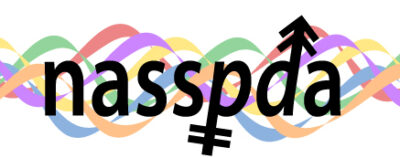Development of Same-Sex Partner Dancing
Originally published in March 2016 NASSPDA Newsletter
Posted: October 24, 2021
By: Benjamin Soencksen
Partner dancing had some of its origins hundreds of years ago, but most of the dances as practiced today developed in the late 19th and early 20th century. The first recorded competitions took place in Mid-Europe in the very early years of the 20th century, highlighted initially by summer and winter championships and eventually by annual championships. Though same-sex coupling had also been, even if marginally, part of the development of these partner dances, competitions solely for same-sex partner dancing had their first incarnations in the mid-1990s, in Europe as well as in the USA (IAGLCWDC formed already in 1993, but had its first recorded competition in 1998; the 1994 Gay Games included a side event held at the Roseland Ballroom in New York City). This development in our communities prompted a call for continent-wide standardization, which subsequently led to the formation of ESSDA as well as NASSPDA in 2007 and ultimately, to have worldwide representation, to the formation of IFSSDA in 2010.
What offsets these, “our” organizations from mainstream organizations has primarily been the definition of a couple, with a focus on same-sex versus opposite-sex composition. But also that the definition of a leader or follower isn’t tied to gender, which led to the possibility of switching lead within a dance multiple times (referred to as “equality dancing” since the 1998 Gay Games, when the term was coined by the organizers of the Dancesport event). A discussion ensued and is still continuing whether changing the lead within a dance helps to enhance partner dancing or hinders the development of “good” dancing. But it is undisputed that with this possibility partner dancing has gotten a new dimension, redefines what characterizes a dance (a main criteria for judging) and constitutes a higher degree of difficulty, if executed successfully.
Additionally, the traditional “look” of a couple was challenged and to this day is a hot topic. What is one to wear so as to not become a copy of a mainstream couple? Or is that desired? To what extend are we defined in our gender or role within the couple by what we wear? What could be considered politically correct within the context of our community or mainstream? This is obviously a very complex issue on so many levels.
Along with all these questions and new possibilities, it has also become increasingly clear that defining a couple as either same-sex or opposite-sex is way too limiting. Even with the introduction of a reverse-role definition of a couple (by NASSPDA rules that defines a couple as a female leading a male at a minimum 75% of the dance), it became soon evident that the limitation wasn’t fully addressed with this addition. BASSDA (Bay Area Same-Sex Dance Association), which organizes “April Follies” each year, had established a new category for that exact reason, which allows basically any configuration of a couple, and added transgender to its definition of male or female categories. Subsequently, along with the increasing openness of mainstream organizations to changing its definition of a couple, allowing for any configuration, NASSPDA added an ‘Open’ category as choice to its rules.
